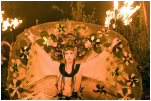
With celebrations starting on the eve of April 30th and continuing through May1st, Beltane is one of the four fire festivals held throughout the year. Known by many different names (May Day, Roodmas, Walpurgisnacht, Belotinia, Cyntefyn, Cethsamhain and Nos Galon-Mai, to name but a few) the purpose of the festival is essentially the same. It is a celebration of life and fertility, the starting point of summer and a welcome for the return of the sun.
The word Beltane is thought to originate from the Gaelic words bel or bhel, meaning to shine, and ten or tene, meaning fire. So Beltane literally translates as “bright fire”. Another theory asserts that the word derives from Bel, a Celtic sun god (aka Bile, Beli, Belinus, Belenos), and translates as the “fire of Bel”. The Bel fires or balefires were lit both as a welcome to the Sun God, and as an invocation, inviting his blessings and protection.
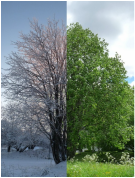
Beltane is the counterpoint to the festival of Samhain. Where Samhain is the start of the season of darkness, sleep and death, Beltane begins the season of light, life and activity. Like Samhain, Beltane is a time when the veil between worlds is thin and magick fills the air.
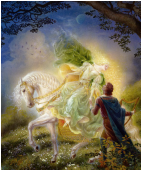
According to some, this is the time the faerie folk return from their winter homes and on Beltane Eve, the Queen of the Faeries roves about the land on her white horse, tempting people away to the land of the Fae. Legend says that if you sit beneath a tree on Beltane night, you may hear the bells on the Queen’s horse, or actually see the Queen Herself. If you hide your face, She will pass you by, but if you look at Her, She may spirit you away.
Like all festivals at this time of year, Beltane is focussed on life, abundance and fertility. One ritual was to drive the herds between two needfires (fein cigin), in order to bring luck, purify the livestock and to ensure their fertility. Hearth fires were extinguished and then rekindled from the balefires. Ashes from the Beltane fires were scattered on the fields to ensure bountiful crops.
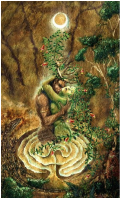
It is at Beltane that the marriage of the God and the Goddess is celebrated. They come together in a sacred union, and the Goddess conceives, ensuring that the Wheel will turn once more. The Great Rite is held at this time, re-enacting and celebrating this union.
The Great Rite isn’t the only sexual Beltane tradition. Young people, betrothed or not, went "a’maying." They would spend the night in the woods or the fields, making love all the night through, then return with armfuls of the first May blossoms to decorate their homes. The older, married people were allowed, on this one night, to set aside the restrictions of the marriage vows. It would come as no surprise that there would be several new additions to the community nine months hence!
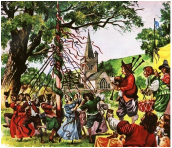
Dancing around the Maypole is another popular tradition, staged around the world. In many pagan traditions, the maypole is rife with sexual symbolism.
The Maypole represents the phallus of the God. The wreath atop represents the vagina of the Goddess. As the Maypole is danced, the ribbons wind around the pole and the wreath lowers, symbolizing the Divine Marriage, the sexual union of God and Goddess. -Yasmine Galenorn, Dancing with the Sun
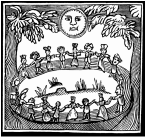
This may be an accurate description of the symbolism of the modern maypole, but it is hard to believe the ancient Celts had yards of ribbon handy to wrap the pole. In fact, the early Maypole dances were likely simple circle dances held around a living tree. Trees were seen as sacred symbols by the ancient Celts, whether they were seen as phallic symbols, I don’t know. In the Middle Ages, mummers likely added ribbons to the dance to make it more theatrical, and the evolution of the Maypole Dance brought us to the modern performance.
With so much focus on fertility, sex and marriages, it would be astonishing if weddings and handfastings weren’t popular at this time. However there are two opposing trains of thought on this:
- By emulating the marriage of the God and Goddess, a couple honours them and their joining would be blessed.
- May is the month to celebrate the marriage of the God and Goddess, and all honours should be theirs alone. So by entering into a legal and permanent marriage at this time, a couple would essentially be stealing their thunder.
Marry in May and rue the day! – old Irish verse

Though legal marriages may or may not be a good idea in May, handfastings are customary. A handfasting is a trial union, lasting a year and a day. These were engagement periods, statements of intent between couples, but were not legally binding. The ancients understood that the initial feelings between two people may not last as they truly get to know one another. And what better way to learn about your potential life partner (not to mention yourself!) than to live and grow together for a test interval. At the end of the trial phase, the couple can part with no obligations, or they can choose to marry.

Bonfires, handfastings, couples gone a’maying……what else is there to do on Beltane? Feast of course! Serve some of the first fresh veggies in a savoury stew, make a nice dandelion salad, and enjoy some bannock for your main meal. Fresh fruits and some fried honey cakes make a wonderful dessert. Celebrate the abundance of the season!
How to Dance the Maypole
Preparation:
- In advance, dig a hole at least 3-4 feet deep, to keep the pole upright during the dance.
- Cut a pole between 15-20 feet long. If you’ve cut a tree for Yule, you can save the trunk for the Maypole. If you’re cutting a tree, make sure you’ve asked permission beforehand and leave an offering of thanks. (If you don't wish to cut a tree, a large wooden pole, metal pole or even a length of PVC pipe can be used.)
- You’ll need lots and lots of ribbon. Use cloth ribbon if possible. The inexpensive paper ribbon will rip and tear as it is woven around the pole. The ribbon with the wire structure will bunch up and it won’t look as nice. Each length of ribbon should be about 2-3 inches wide and twice as long as the above ground portion of the pole. You will need equal numbers of ribbons of at least two colours; depending on the number of dancers (at least 6-8 are recommended. The colours of the ribbons depend on the preference. Traditionally, red and white are used, representing the God and Goddess. Some use colours befitting the season; green for the forest, golden for the sun. Let your instincts lead you to the colours that are appropriate for your Maypole.
- Attach the ribbons to the top of the pole; you can put in an eyelet and tie the ribbons to that, or affix them with tacks, nails, glue, etc. You can also make a couple of crosscuts at the top of the pole, tie a knot at the end of the ribbon and then thread the ribbon into the cut. The knot will prevent it from sliding back out.
- Once the ribbons are attached, you can also slide a flower wreath on top. (Tradition says the wreath should be made on Beltane morning from May flowers gathered fresh from the fields.) It must be somewhat bigger than the pole, and will hang suspended by the ribbons. As the ribbons are wound, the wreath will be lowered until it sits at the bottom of the pole.
- Raise the pole until it is vertical, slide it into the hole and pack dirt around the base so it will hold steady during the dance.
The Maypole Dance
Now comes the complicated part; the dance itself. An even number of dancers is easiest, but an odd one out won’t ruin the weave, it’ll just add a little knobbly here and there. If you have an even number of male and female dancers, that’s great. Traditionally, women start on the inside of the circle and move clockwise, men on the outside and move counter clockwise. If there aren’t an equal number of men and women, just have everyone count off in twos.
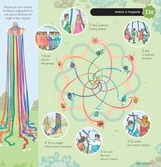
Group 1 will start in the inner circle, group 2 on the outer. Hold the ribbon in the hand closest to the pole. As you move around the circle, pass first on the left, then the right, then the left again, weaving in and out. If you are passing on the outside, hold the ribbon up so the inner person can pass under it. Keep going around and around until everyone runs out of ribbon, then knot all the ribbons at the bottom.
If you’ve placed a wreath on the top, it will slide down the pole as it is wrapped and will eventually sit on the ground at the base.
Of course any dance isn’t complete without some fancy steps and music! Many dancers wear bells while dancing the Maypole. Using a step between a jog and a skip, come down in time to the music or chant so that the bells mark off the beat. Morris music, or traditional pipe and drum tunes would be appropriate to the occasion.
If you are having a children’s Maypole dance, it’s easiest to have all the dancers go around in the same direction. It may not look as fancy, but that’s not the real point behind it. This way the kids can participate in the festival in a fun and appropriate manner.
Wishing you and yours a most joyous Beltane!
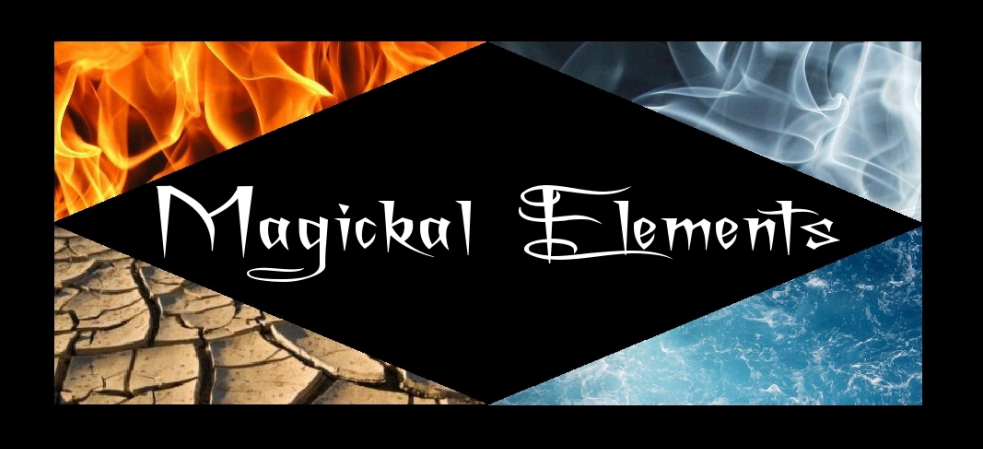
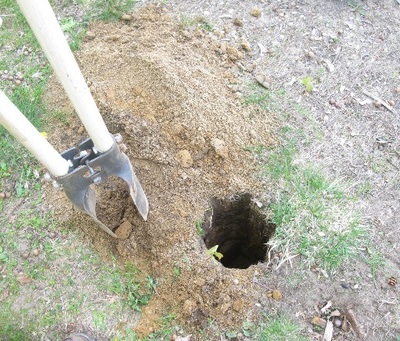


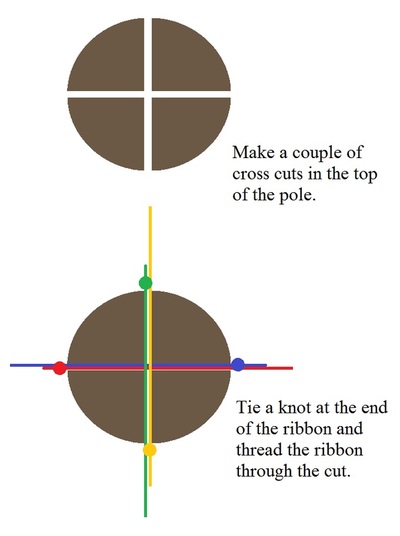
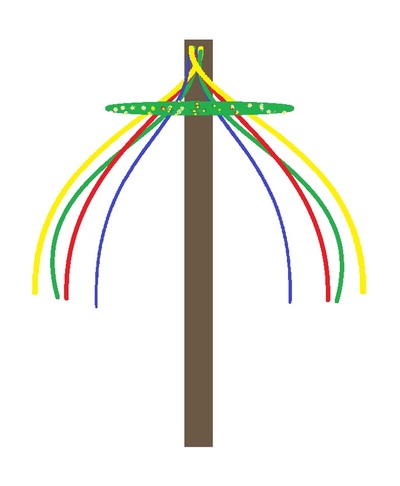
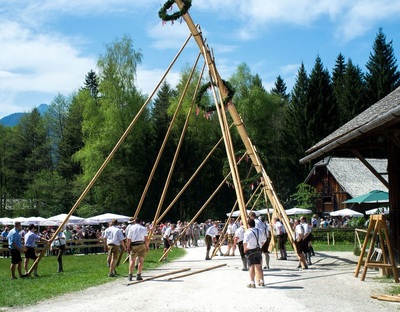
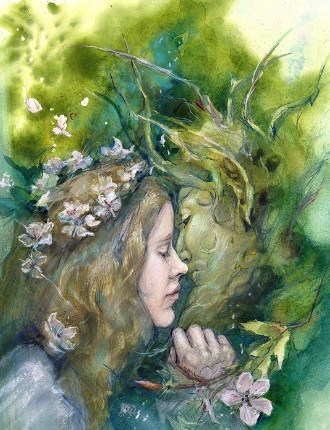
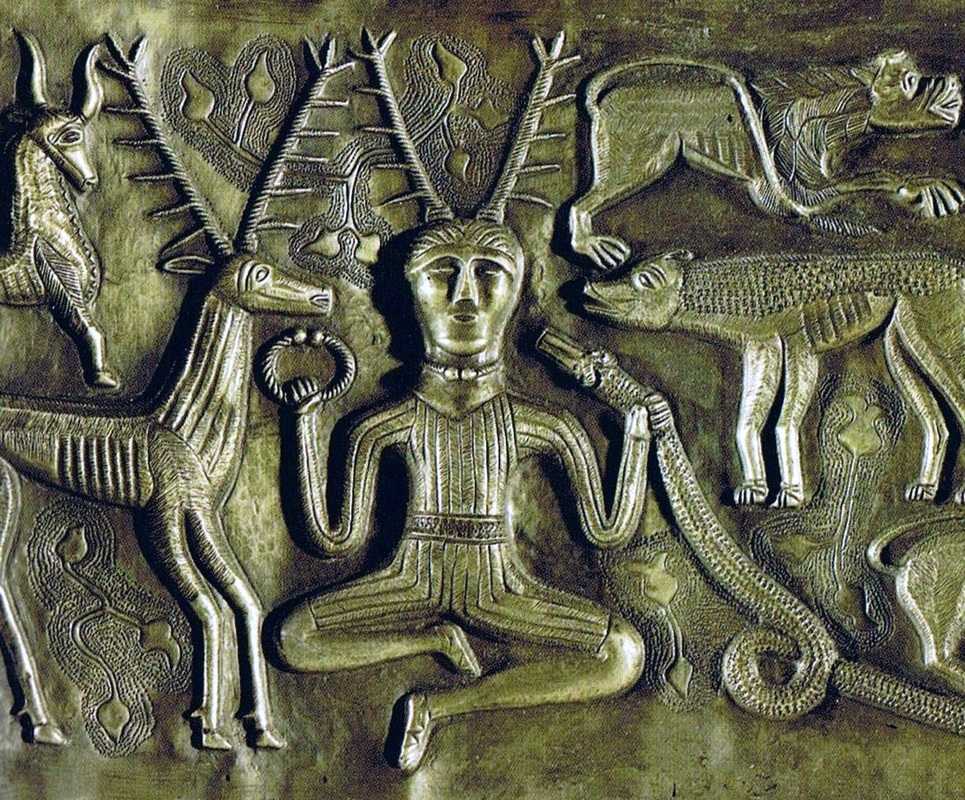
 RSS Feed
RSS Feed
